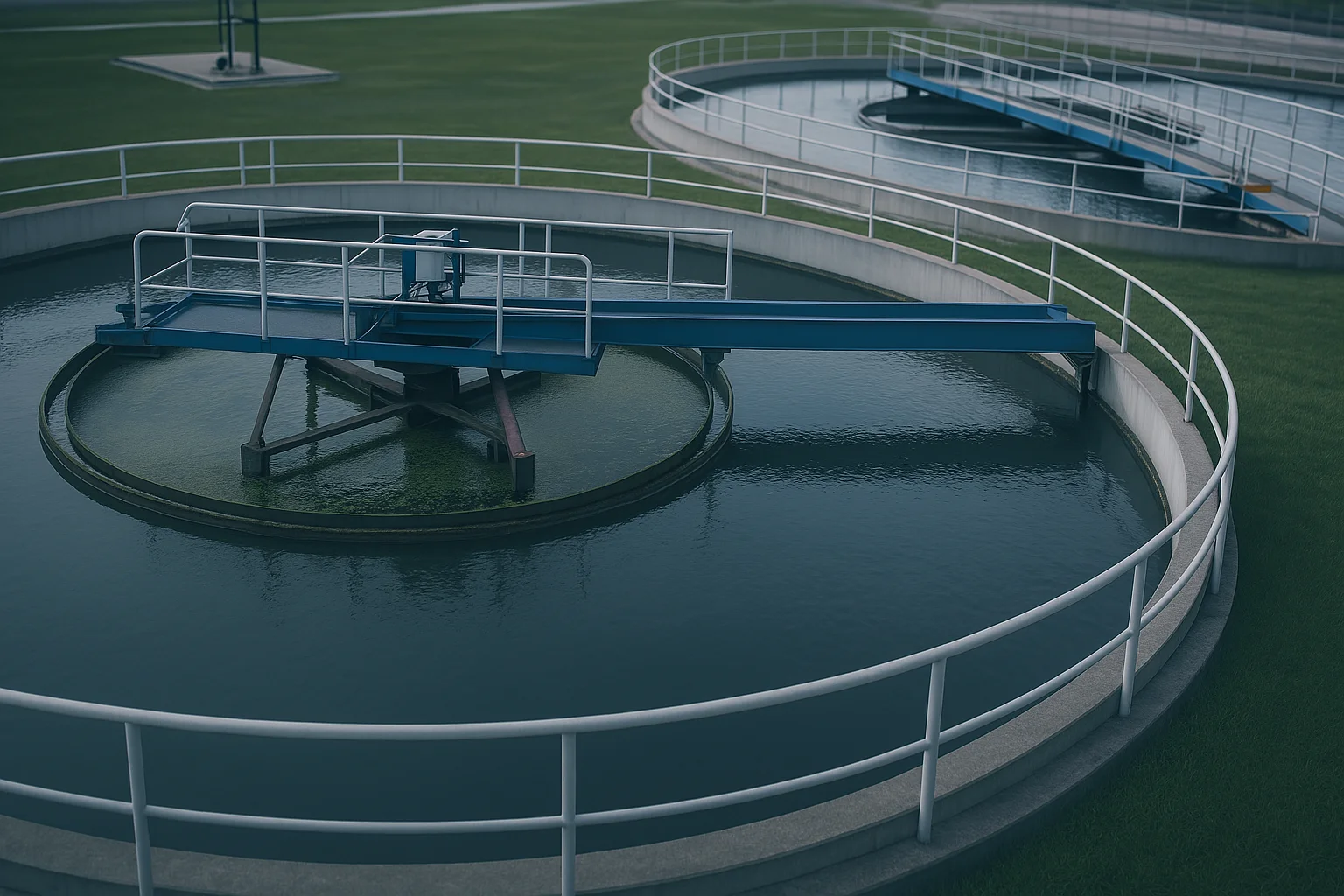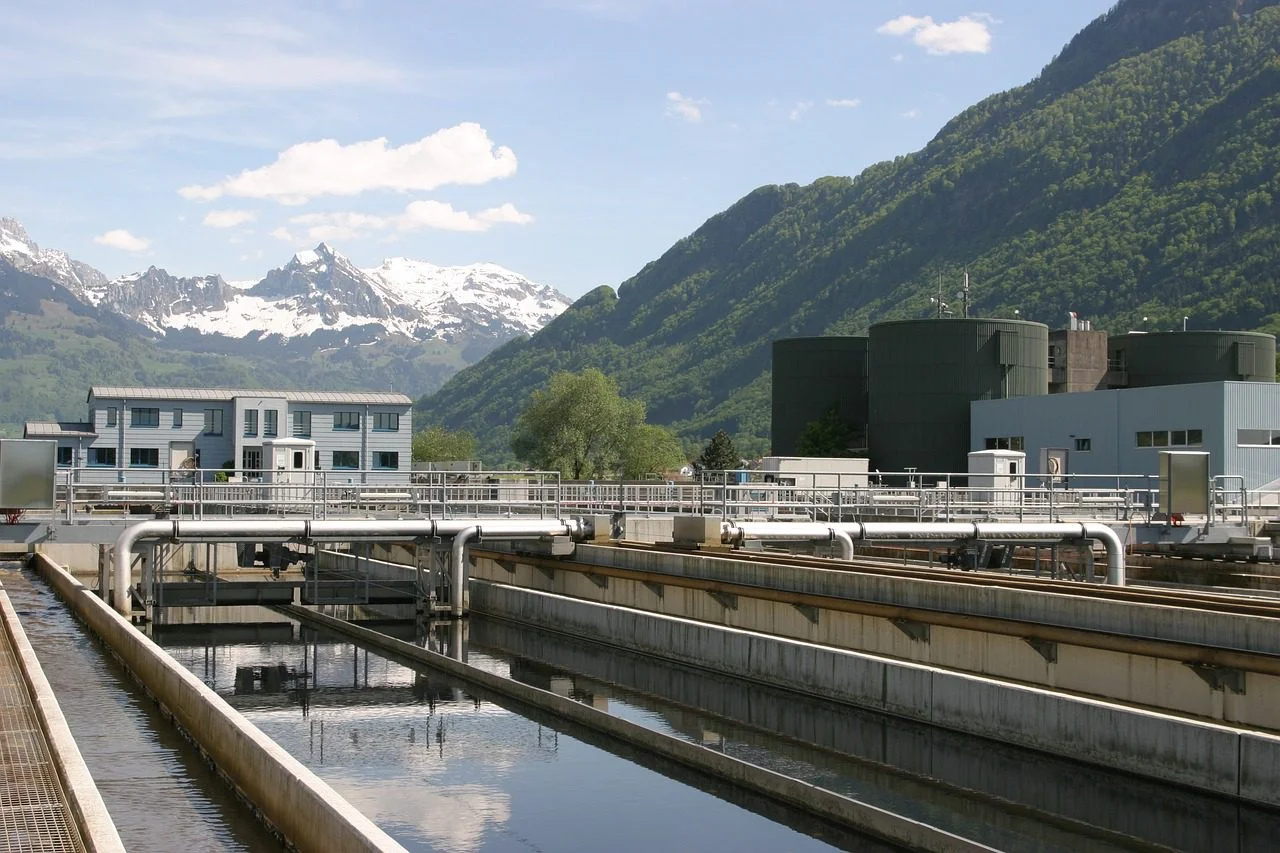Wastewater Treatment System
Wastewater treatment refers to the process of treating water that has been contaminated through human activities. This includes water originating from domestic households, industrial operations, and surface runoff.
The primary objective of wastewater treatment is to eliminate harmful contaminants, thereby preventing waterborne diseases and protecting the environment, including land and water bodies where treated water is discharged. Today, a key goal of wastewater treatment is to enable water reuse, supporting sustainable water management and conserving natural water resources.
Steps of Wastewater Treatment System
In order to treat the wastewater, the first step is the measurement of flow and characterization of wastewater either by grab sampling or composite sampling. Grab sampling is a measurement technique in which a single or more are taken at a specific time while Composite sampling is the measurement technique in which sampling is done at regular intervals over a period of time usually 24 hours. Mean values are used to design the wastewater treatment system.
The next step involves selecting an appropriate treatment system based on the specific type of wastewater. Treatment systems generally fall into three main categories:


Revolutionizing Water Purity
Wastewater treatment is a vital process that protects water ecosystems while converting contaminated water into a safe, reusable resource. Innovative technologies enhance efficiency and sustainability, effectively addressing a wide range of pollutants. From municipal systems to individual households, wastewater treatment offers tailored solutions at every scale. Beyond purification, this process supports environmental conservation, safeguarding water resources for a sustainable future. Explore how advanced wastewater treatment ensures cleaner water, promotes resource preservation, and secures a healthier tomorrow.
The implementation of a Containerized/Packaged Type System enhances the efficiency and flexibility of a Wastewater Treatment System, allowing for modular, portable, and scalable solutions in diverse environmental contexts.The Moving Bed Biofilm Reactor (MBBR) is an advanced and efficient wastewater treatment technology that promotes biofilm growth on suspended carriers, significantly improving biological treatment performance.
Get Reliable, Cost-Effective Water Solutions for Your Industry
WASTEWATER TREATMENT
Advanced Wastewater Treatment Technologies
- Sludge-Free Effluent Treatment Systems
Electrocoagulation Units
Membrane Bioreactor (MBR) Systems
Containerized / Packaged Treatment Plants
Zero Liquid Discharge (ZLD) Solutions
Optimized Moving Bed Biofilm Reactor (OMBBR)
key Advatnges
- Odor-free operation
Sludge-free treatment process
Customizable treatment to meet desired water quality levels
Low capital investment, maintenance, and operating costs
Compact design with minimal footprint and eco-friendly technology
Sludge-Free Effluent Treatment Plant
BioCleaner is an advanced wastewater treatment system that utilizes naturally occurring bacteria to process and purify wastewater. Suitable for residential, commercial, industrial, and municipal applications, this eco-friendly solution features a compact design and holds a Green Patent with an “A” rating for sustainability.
Electrocoagulation
Electrocoagulation has gained significant attention in the environmental sector for its effectiveness in treating various types of wastewater. By combining electrochemistry, coagulation, and flotation, it offers a versatile and efficient solution for industrial effluent treatment. Its environmental compatibility, cost-effectiveness, and high treatment performance make it a promising and sustainable technology.
Zero Liquid Discharge (ZLD)
Zero Liquid Discharge (ZLD) is a closed-loop water treatment approach designed to eliminate all liquid waste, ensuring no discharge into the environment. It typically involves a combination of thermal processes (such as evaporation), membrane technologies (like reverse osmosis, forward osmosis, membrane distillation, and electrodialysis), along with physiochemical and biological pretreatment methods.
A wastewater treatment system is a facility designed to remove pollutants and contaminants from industrial, municipal, or domestic wastewater to make it safe for discharge or reuse.
Wastewater treatment is crucial for protecting the environment and public health. It prevents the release of harmful pollutants into water bodies, ensuring the safety of our water resources.
Wastewater treatment systems use physical, chemical, and biological processes to remove impurities from water. These processes aim to separate solids, break down organic matter, and eliminate harmful substances.
A typical wastewater treatment system consists of primary treatment (physical processes), secondary treatment (biological processes), and sometimes tertiary treatment (advanced processes) to further refine the water quality.
Yes, wastewater treatment systems are designed to handle a variety of pollutants, including organic matter, nutrients, pathogens, and chemicals. The specific treatment processes may vary depending on the composition of the wastewater.
Yes, there are various types of wastewater treatment systems, including activated sludge systems, trickling filters, and membrane bioreactors. The choice of system depends on factors such as the volume and characteristics of the wastewater.
Advanced technologies, such as sensors, automation, and artificial intelligence, play a significant role in optimizing wastewater treatment processes. These technologies enhance efficiency, monitoring, and overall system performance.
Wastewater treatment can be tailored for both large-scale municipal plants and smaller-scale systems, such as decentralized treatment units for individual homes or small communities.
Wastewater treatment allows for the safe reuse of treated water in various applications, reducing the demand on freshwater resources. This contributes to water conservation and promotes sustainability.
Challenges include adapting to changing pollutant profiles, addressing emerging contaminants, and ensuring infrastructure resilience. Balancing cost-effectiveness with environmental protection is an ongoing challenge in wastewater treatment.
